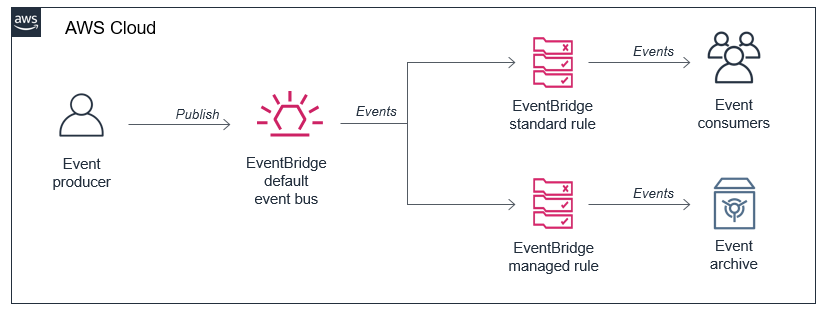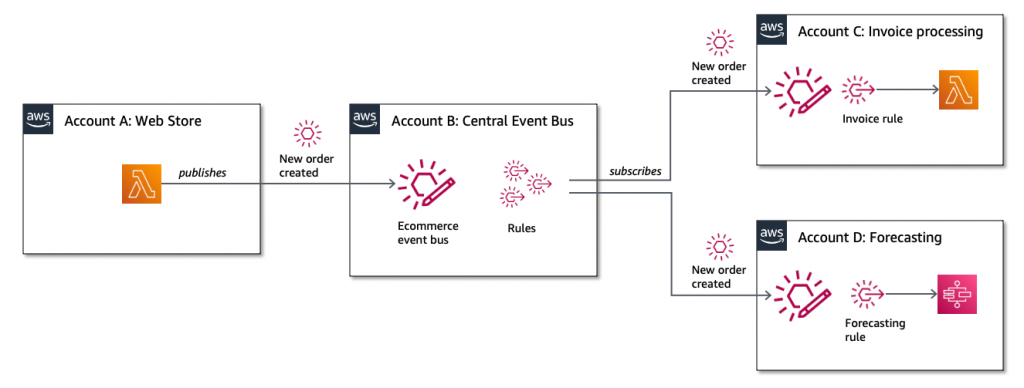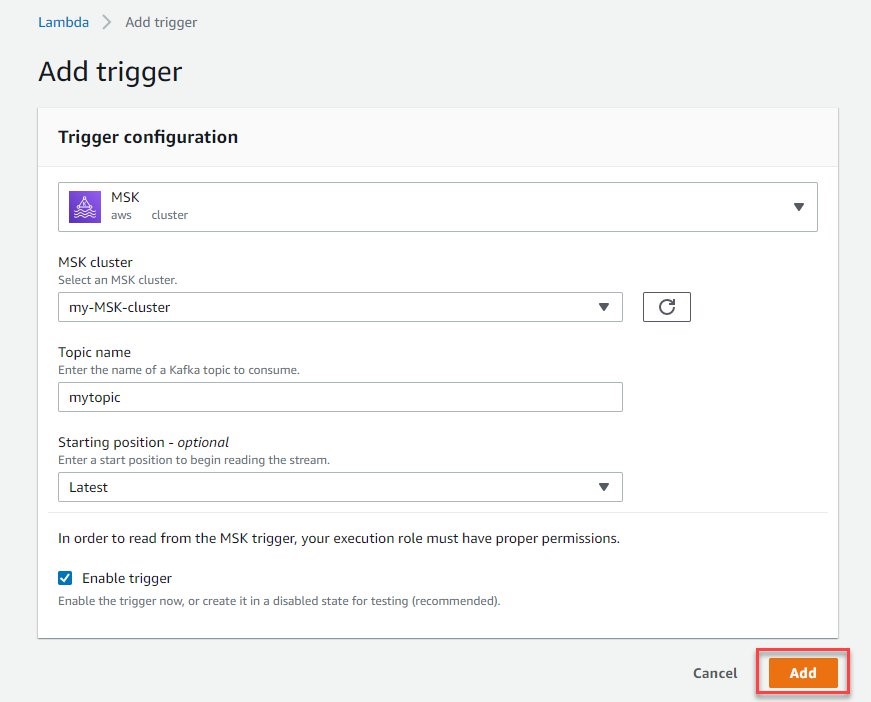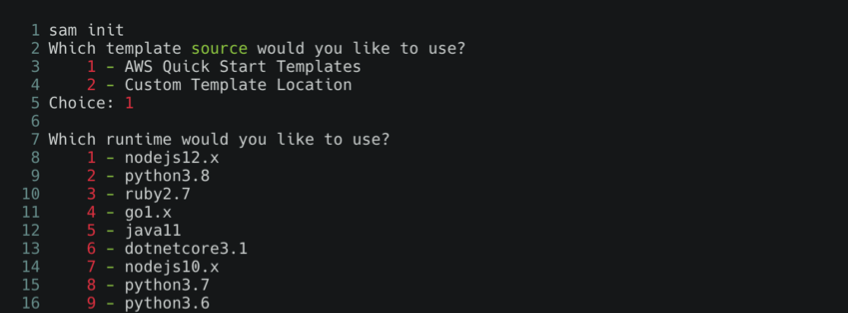Post Syndicated from Marcia Villalba original https://aws.amazon.com/blogs/compute/serverless-icymi-q4-2022/
Welcome to the 20th edition of the AWS Serverless ICYMI (in case you missed it) quarterly recap. Every quarter, we share all the most recent product launches, feature enhancements, blog posts, webinars, Twitch live streams, and other interesting things that you might have missed! In case you missed our last ICYMI, check out what happened last quarter here.
In case you missed our last ICYMI, check out what happened last quarter here.
AWS Lambda
For developers using Java, AWS Lambda has introduced Lambda SnapStart. SnapStart is a new capability that can improve the start-up performance of functions using Corretto (java11) runtime by up to 10 times, at no extra cost.
To use this capability, you must enable it in your function and then publish a new version. This triggers the optimization process. This process initializes the function, takes an immutable, encrypted snapshot of the memory and disk state, and caches it for reuse. When the function is invoked, the state is retrieved from the cache in chunks, on an as-needed basis, and it is used to populate the execution environment.
The ICYMI: Serverless pre:Invent 2022 post shares some of the launches for Lambda before November 21, like the support of Lambda functions using Node.js 18 as a runtime, the Lambda Telemetry API, and new .NET tooling to support .NET 7 applications.
Also, now Amazon Inspector supports Lambda functions. You can enable Amazon Inspector to scan your functions continually for known vulnerabilities. The log4j vulnerability shows how important it is to scan your code for vulnerabilities continuously, not only after deployment. Vulnerabilities can be discovered at any time, and with Amazon Inspector, your functions and layers are rescanned whenever a new vulnerability is published.
AWS Step Functions
There were many new launches for AWS Step Functions, like intrinsic functions, cross-account access capabilities, and the new executions experience for Express Workflows covered in the pre:Invent post.
During AWS re:Invent this year, we announced Step Functions Distributed Map. If you need to process many files, or items inside CSV or JSON files, this new flow can help you. The new distributed map flow orchestrates large-scale parallel workloads.
This feature is optimized for files stored in Amazon S3. You can either process in parallel multiple files stored in a bucket, or process one large JSON or CSV file, in which each line contains an independent item. For example, you can convert a video file into multiple .gif animations using a distributed map, or process over 37 GB of aggregated weather data to find the highest temperature of the day.
 Amazon EventBridge
Amazon EventBridge
Amazon EventBridge launched two major features: Scheduler and Pipes. Amazon EventBridge Scheduler allows you to create, run, and manage scheduled tasks at scale. You can schedule one-time or recurring tasks across 270 services and over 6.000 APIs.
Amazon EventBridge Pipes allows you to create point-to-point integrations between event producers and consumers. With Pipes you can now connect different sources, like Amazon Kinesis Data Streams, Amazon DynamoDB Streams, Amazon SQS, Amazon Managed Streaming for Apache Kafka, and Amazon MQ to over 14 targets, such as Step Functions, Kinesis Data Streams, Lambda, and others. It not only allows you to connect these different event producers to consumers, but also provides filtering and enriching capabilities for events. 
EventBridge now supports enhanced filtering capabilities including:
- Matching against characters at the end of a value (suffix filtering)
- Ignoring case sensitivity (equals-ignore-case)
- OR matching: A single rule can match if any conditions across multiple separate fields are true.
It’s now also simpler to build rules, and you can generate AWS CloudFormation from the console pages and generate event patterns from a schema.
AWS Serverless Application Model (AWS SAM)
There were many announcements for AWS SAM during this quarter summarized in the ICMYI: Serverless pre:Invent 2022 post, like AWS SAM Connectors, SAM CLI Pipelines now support OpenID Connect Protocol, and AWS SAM CLI Terraform support.
AWS Application Composer
AWS Application Composer is a new visual designer that you can use to build serverless applications using multiple AWS services. This is ideal if you want to build a prototype, review with others architectures, generate diagrams for your projects, or onboard new team members to a project.
Within a simple user interface, you can drag and drop the different AWS resources and configure them visually. You can use AWS Application Composer together with AWS SAM Accelerate to build and test your applications in the AWS Cloud.
AWS Serverless digital learning badges
The new AWS Serverless digital learning badges let you show your AWS Serverless knowledge and skills. This is a verifiable digital badge that is aligned with the AWS Serverless Learning Plan.
This badge proves your knowledge and skills for Lambda, Amazon API Gateway, and designing serverless applications. To earn this badge, you must score at least 80 percent on the assessment associated with the Learning Plan. Visit this link if you are ready to get started learning or just jump directly to the assessment. 
News from other services:
Amazon SNS
Amazon SQS
- Introducing attribute-based access controls (ABAC) for Amazon SQS
- Amazon SQS announces Server-Side Encryption with Amazon SQS-managed encryption keys (SSE-SQS) by default
AWS AppSync and AWS Amplify
- AWS AppSync GraphQL APIs Supports JavaScript Resolvers
- AWS Amplify Hosting announces support for Next.js 12 and 13
- AWS Amplify Flutter Announces Web and Desktop support (Developer Preview) for API, Analytics, and Storage
- Announcing new AWS Amplify Library for Swift, now with support for both iOS and macOS
Observability
- Protect Sensitive Data with Amazon CloudWatch Logs
- Amazon CloudWatch Cross-Account Observability
- AWS X-Ray adds trace linking for event-driven applications built on Amazon SQS and AWS Lambda
AWS re:Invent 2022
AWS re:Invent was held in Las Vegas from November 28 to December 2, 2022. Werner Vogels, Amazon’s CTO, highlighted event-driven applications during his keynote. He stated that the world is asynchronous and showed how strange a synchronous world would be. During the keynote, he showcased Serverlesspresso as an example of an event-driven application.  The Serverless DA team presented many breakouts, workshops, and chalk talks. Rewatch all our breakout content:
The Serverless DA team presented many breakouts, workshops, and chalk talks. Rewatch all our breakout content:
- Building Serverlesspresso: Creating event-driven architectures (SVS312)
- Advanced serverless workflow patterns and best practices (API309)
- Building next-gen applications with event-driven architectures (API311-R)
- Building global event-driven applications (API302-R)
- Best practices for advanced serverless developers (SVS401)
- Lift and shift a web application to serverless: Yes, it’s possible! (BOA326)
- Building observable applications with OpenTelemetry (BOA310)
- Building real-world serverless applications with AWS SAM (SVS303)
In addition, we brought Serverlesspresso back to Vegas. Serverlesspresso is a contactless, serverless order management system for a physical coffee bar. The architecture comprises several serverless apps that support an ordering process from a customer’s smartphone to a real espresso bar. The customer can check the virtual line, place an order, and receive a notification when their drink is ready for pickup.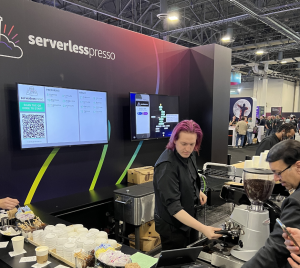
Serverless blog posts
October
- Oct 5 – Announcing server-side encryption with Amazon Simple Queue Service -managed encryption keys (SSE-SQS) by default
- Oct 12 – Simplifying serverless permissions with AWS SAM Connectors
- Oct 18 – Propagating valid mTLS client certificate identity to downstream services using Amazon API Gateway
- Oct 26 – Serverless and Application Integration sessions at AWS re:Invent 2022
- Oct 27 – Implementing a UML state machine using AWS Step Functions
November
- Nov 7 – Server-side rendering micro-frontends – the architecture
- Nov 9 – Enriching operational events with AWS Serverless
- Nov 10 – Introducing the AWS Lambda Telemetry API
- Nov 10 – Introducing Amazon EventBridge Scheduler
- Nov 15 – Better together: AWS SAM CLI and HashiCorp Terraform
- Nov 15 – Building serverless .NET applications on AWS Lambda using .NET 7
- Nov 17 – Introducing attribute-based access controls (ABAC) for Amazon SQS
- Nov 18 – Node.js 18.x runtime now available in AWS Lambda
- Nov 18 – Introducing cross-account access capabilities for AWS Step Functions
- Nov 18 – Using the AWS Parameter and Secrets Lambda extension to cache parameters and secrets
- Nov 18 – Introducing container, database, and queue utilization metrics for the Amazon MWAA environment
- Nov 21 – ICYMI: Serverless pre:Invent 2022
- Nov 22 – Introducing payload-based message filtering for Amazon SNS
- Nov 29 – Starting up faster with AWS Lambda SnapStart
- Nov 29 – Reducing Java cold starts on AWS Lambda functions with SnapStart
- Nov 29 – Introducing new AWS Serverless digital learning badges
December
- Dec 1 – Visualize and create your serverless workloads with AWS Application Composer
- Dec 6 – Introducing Serverlesspresso Extensions
- Dec 7 – Securing Lambda Function URLs using Amazon Cognito, Amazon CloudFront and AWS WAF
- Dec 13 – Visualizing the impact of AWS Lambda code updates
- Dec 14 – Chaos experiments using AWS Step Functions and AWS Fault Injection Simulator
- Dec 15 – Architecture patterns for consuming private APIs cross-account
Videos
Serverless Office Hours – Tuesday 10 AM PT
Weekly live virtual office hours: In each session, we talk about a specific topic or technology related to serverless and open it up to helping with your real serverless challenges and issues. Ask us anything about serverless technologies and applications.
YouTube: youtube.com/serverlessland
Twitch: twitch.tv/aws
October
- Oct 11 – AWS SAM Accelerate and nested stacks
- Oct 18 – The Serverless Snippets Collection
- Oct 25 – AWS Step Functions – What’s New
November
- Nov 1 – Simpler permissions with AWS SAM connectors
- Nov 8 – Amazon MSK Serverless
- Nov 15 – Amazon EventBridge Scheduler
- Nov 22 – pre:Invent 2022!
December
- Dec 6 – Reduce Java cold starts by 10x with AWS Lambda
- Dec 13 – Amazon EventBridge Pipes
- Dec 20 – AWS Step Functions large-scale parallel data processing
FooBar Serverless YouTube Channel
Marcia Villalba frequently publishes new videos on her popular FooBar Serverless YouTube channel.
October
- Oct 1 – Pub/Sub – Amazon SNS – Exploring Event-Driven Patterns
- Oct 13 – Event Streaming – Amazon Kinesis – Exploring Event-Driven Patterns
November
- Nov 3 – Why to build a multi-Region serverless application and why not?
- Nov 10 – Read and Write Data patterns for Multi-Region architectures
- Nov 17 – Understanding AWS Lambda scaling and throughput
- Nov 24 –
 Amazon EventBridge Scheduler | Schedule tasks over +200 targets!
Amazon EventBridge Scheduler | Schedule tasks over +200 targets!
December
- Dec 8 – Getting started with Route53 for multi-Region applications
- Dec 15 – Building an application that routes traffic to a Region based on latency
- Dec 21 – Building DynamoDB Global Tables with AWS CDK for multi-region serverless applications
Still looking for more?
The Serverless landing page has more information. The Lambda resources page contains case studies, webinars, whitepapers, customer stories, reference architectures, and even more Getting Started tutorials. If you want to learn more about event-driven architectures, read our new guide that will help you get started.
You can also follow the Serverless Developer Advocacy team on Twitter and LinkedIn to see the latest news, follow conversations, and interact with the team.
- James Beswick: Twitter and LinkedIn
- David Boyne: Twitter and LinkedIn
- Eric Johnson: Twitter and LinkedIn
- Ben Smith: Twitter and LinkedIn
- Marcia Villalba: Twitter and LinkedIn
- Julian Wood: Twitter and LinkedIn
For more serverless learning resources, visit Serverless Land.

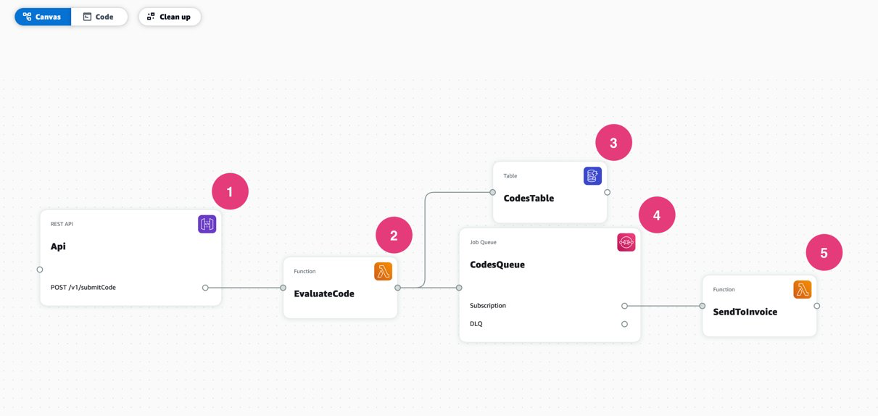


 Amazon EventBridge Scheduler | Schedule tasks over +200 targets!
Amazon EventBridge Scheduler | Schedule tasks over +200 targets!


